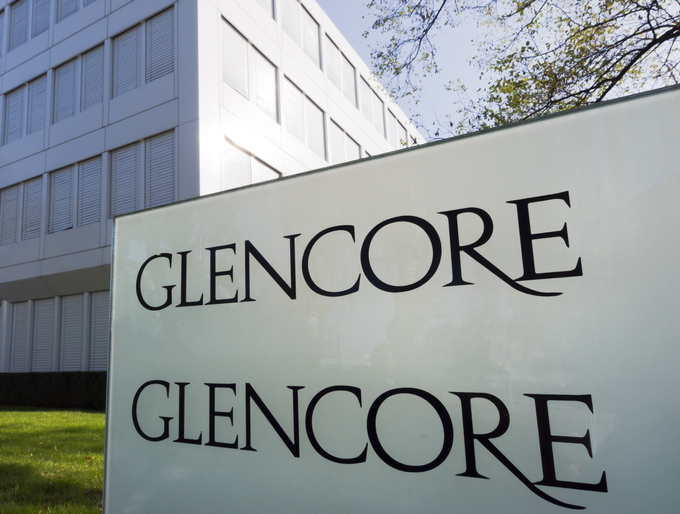ii view: Glencore copper production falls short
Exposure to a basket of energy transition metals such as copper, cobalt and zinc, and with shares in the FTSE 100 miner down by more than fifth year-to-date. Buy, sell, or hold?
30th April 2025 11:19
by Keith Bowman from interactive investor

First-quarter production update to 31 March
- Copper production down 30% from Q1 2024 to 168 kilo tonnes (kt)
Guidance:
- Now expects full-year energy coal production of 87-95 million tonnes (mt), down from a previous 92-100 mt
- Continues to expect full-year copper production of 850-910 kt
- Continues to expect full-year adjusted profit for the marketing/trading division of between $2.2 billion and $3.2 billion
ii round-up:
Miner and commodity trader Glencore (LSE:GLEN) today missed City hopes for early year copper production as well as downgrading forecasts for energy coal output.
First-quarter copper production of 168 mt was down 30% from Q1 2024, missing analyst forecasts of 204 mt. Copper generates close to a third of Glencore profits. Annual energy coal production, responsible for around 15% of profits, is now expected to be between 87 and 95 mt, down from a previous estimate of 92-100 mt. Annual profit at the marketing, or trading division is still expected to materialise at up to $3.2 billion.
Shares in the FTSE 100 miner fell 6% in UK trading having come into this latest news down by around a quarter so far in 2025. That’s much worse than a 4% retreat for iron ore focused rival Rio Tinto Ordinary Shares (LSE:RIO). The FTSE 100 index is up around 2.5% year-to-date.
- Invest with ii: Open an ISA | ISA Investment Ideas | Transfer a Stocks & Shares ISA
Glencore has operations in over 30 countries and is both a producer and trader of more than 60 different commodities. Earlier in 2025, the Swiss headquartered miner said it had considered moving its primary stock market listing away from London.
Despite the early year production miss, Glencore still expects annual 2025 copper output to be between 850 and 910 kt, with output weighted approximately 42%/58% over H1 and H2 2025 respectively.
Early zinc production, generating around 14% of group profit, rose 4% year over year to 214 kt, but missed City forecasts of 230 kt.
Blast furnace, or steelmaking coal, which is boosted by Glencore’s previous acquisition of assets from Teck Resources Ltd Class B (Sub Voting) (NYSE:TECK), hit 8.3 mt, surpassing forecasts of 8 mt.
Broker Morgan Stanley reiterated its ‘overweight’ stance on the shares post the results. A second quarter/first half production update is scheduled for 30 July.
ii view:
Started in 1974, Glencore today employs around 150,000 staff and contractors globally. Group customers range from car makers to steel, power generation and battery manufacturing companies. Geographically, China and Singapore provided around 12% of 2024 sales, with the US and UK close behind at around 11%. Other Asian countries generated a further 23% of sales, with Europe 17% and Africa 5%.
For investors, pressure on copper production for the rest of the year has increased. Possibly moving its primary stock market listing will not suit all investors. US trade tariffs could potentially hinder global economic growth, reducing demand for commodities. Glencore’s involvement in coal production may deter some new investors given its considered part in climate change, while exposure to political instability in countries of operation such as Democratic Republic of the Congo and Kazakhstan also warrants consideration.
On the upside, 2024 copper production was second-half weighted. US trade tariffs may create opportunity for the Marketing division, with City hopes for annual profit already sat at around $3 billion. An arguable backtracking on global climate change aspirations may leave its involvement in coal looking more sensible, while exposure to energy transition metals such as copper, cobalt and zinc, used in batteries, is not to be forgotten.
For now, Glencore’s diversity of operations combined with a consensus analyst fair value estimate above 385p per share are attractive. However, the shares are currently friendless, trading at their lowest since the end of 2020, and the business has a lot of work to do in the second quarter.
Positives:
- Diversity of commodities and operations
- Estimated forward dividend yield of 3.4%
Negatives:
- Uncertain economic outlook
- The weather can hinder performance
The average rating of stock market analysts:
Buy
These articles are provided for information purposes only. Occasionally, an opinion about whether to buy or sell a specific investment may be provided by third parties. The content is not intended to be a personal recommendation to buy or sell any financial instrument or product, or to adopt any investment strategy as it is not provided based on an assessment of your investing knowledge and experience, your financial situation or your investment objectives. The value of your investments, and the income derived from them, may go down as well as up. You may not get back all the money that you invest. The investments referred to in this article may not be suitable for all investors, and if in doubt, an investor should seek advice from a qualified investment adviser.
Full performance can be found on the company or index summary page on the interactive investor website. Simply click on the company's or index name highlighted in the article.